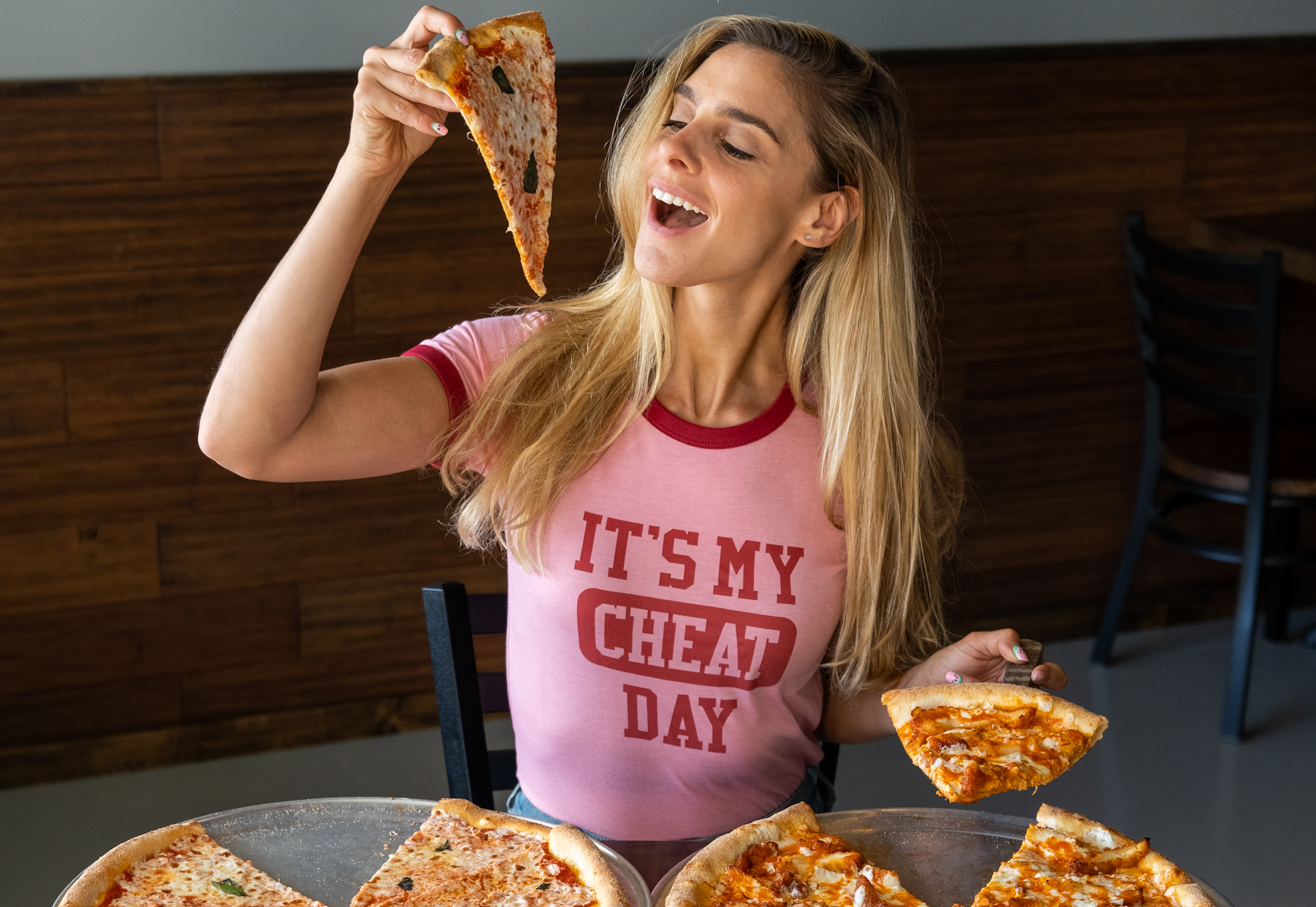By: Tone House Sports Dietitian Ryan Turner

Eating out in NYC can be an experience, as it should be. As New Yorkers we have the benefit of enjoying the best food in the world, nearly any cuisine, right next door. We should take that opportunity without reservation; indulge in something you’ve been craving, enjoy something you’ve never tried before, take in the experience for all that it is, because a lot of thought and effort was put into the experience and you work hard enough to deserve that experience.
Eating out isn’t inherently problematic. However, the frequency at which we do so based on our work schedule and lifestyle can be. If you find yourself frequently at client lunches, business dinners, or celebratory gatherings, you may need to assess whether your food choices in those situations are in line with your nutrition goals. If not, there are a few things you can try to establish more control.
Tufts University found the average non-chain restaurant meal contained 1,200 calories. That’s a significant amount of calories in one meal for almost anyone. American, Italian, and Chinese cuisine were found to average higher at 1,500 calories (1). Chain and fast-casual restaurants are required to post calories on their menu, but that doesn’t mean they’re any less calorie-dense. It’s easy to find a “salad” upwards of 800-1000 calories.

With a bit of awareness for some simple adjustments, you can find control in your meals. Sure, you can share your meal to eat less, refuse the bread, stick with the chicken, or only drink water – but you’ve probably tried all that already. Will they work? Yeah, most likely. But let’s try looking at it a little differently:
- Identify your protein: protein is important for muscle maintenance and can increase satiety as well as blood sugar control. By prioritizing protein in your meal you’ll likely keep the calories controlled compared to other higher starch dishes. As an athlete we need to make sure to not miss an opportunity to get protein, otherwise, we may find ourselves deficient and missing out on optimal recovery from workouts.
- Be aware of fat sources: Let’s be clear that a low or high-fat diet isn’t the goal of saying that. Fat sources can quickly add up and we generally don’t need to be promoting a high-fat diet. If ordering a dish or a salad try choosing one fat source: sauce for more flavor, aioli to dip, avocado for healthy fat, an olive oil-based dressing, nuts or seeds for texture, or high omega-3 fatty fish. They can all provide a benefit – just don’t go overboard. Grilled, broiled, or steamed will tell you that the food is prepared with less fat as well. Fried, breaded, cheesy, smothered, rich, and creamy are all indicators that the food has additional fat added to it.
- Swap the plate: sometimes one main dish will have a more beneficial “set up” than another. For instance, you see on the menu that the grilled salmon comes with roasted Brussels sprouts and the flank steak comes with cheesy grits. You make the decision to get the flank steak, but want to make sure you’re choosing a more optimal fiber source to go with the meal. You can ask the server for the flank steak with the “salmon set up.” Not every restaurant will do that, but most will if you ask nicely (I’ve worked at enough to suggest this.)
- Prioritize the sides menu: Let’s say the above example isn’t possible, the server says they can’t accommodate your request, not a problem! Order a side of that vegetable and you’re still in business. Prioritize carrots, brussels sprouts, broccoli, asparagus – not to say any other vegetable isn’t worth it, but these four contain a better amount of soluble fiber to promote satiety.
- Give yourself a non-alcoholic drink goal vs. an alcohol drink max: I don’t believe restrictive goals are the best way to achieve your nutrition goals. Most people are aware that sugary mixers, high alcoholic beers like IPA’s, and just overall more alcohol is more caloric than one vodka seltzer on a night out. Yes, the less drinks the better for most nutrition goals. However, instead of focusing on a drink limit, focus on a non-alcoholic goal when you go out. Challenge yourself to drink four non-alcoholic drinks (water with lemon, seltzer with lime, unsweetened tea, etc). This isn’t about lessening a hangover or consuming less calories. It’s about keeping your overall nutrition goals at the forefront of your mind and support the habits you’re hoping to achieve.
- Enjoy yourself: It will be important to assess your situation and decide if the situation calls for more or less control. If you’re celebrating a promotion or eating out at “the best” restaurant, by all means, ENJOY YOURSELF! One night out will not derail progress. The worst thing you can do is regret your decision to not try “the best house-made gnocchi” or “the dish they’re known for” and then keep wishing you did. That’s a sign of restriction and that will only lead to rebellion later. You should go ahead and live in those moments. Eat those foods. Enjoy it. Just use these tips as a guide to keeping your NYC food journey in line with your nutrition goals.
1. Urban, Lorien E. et al. Energy Contents of Frequently Ordered Restaurant Meals and Comparison with Human Energy Requirements and US Department of Agriculture Database Information: A Multisite Randomized Study Journal of the Academy of Nutrition and Dietetics , Volume 116 , Issue 4 , 590 – 598.e6

Thanks for sharing. I read many of your blog posts, cool, your blog is very good.
Thanks for sharing. I read many of your blog posts, cool, your blog is very good.
70918248
References:
real dianabol steroids for sale – chotaikhoan.me –
Your article helped me a lot, is there any more related content? Thanks!
I appreciate how well-written and informative this post is. It’s hard to find content that’s both engaging and useful—great job
70918248
References:
Welche Lebensmittel Sind Gut FüR Testosteron
70918248
References:
herzprobleme durch testosteron, Calvin,
Thanks for sharing such detailed information. Your blog always makes complex things so much easier to understand
Every aspect here shows high quality. From the look to the service, everything feels exclusive. You could say, this is situs toto who is truly trustworthy.
70918248
References:
Is Buying Steroids Illegal
This article was truly helpfulI’ve been looking for a clear explanation like this for a while. Thank you for breaking it down so well
With its sleek interface and flawless functionality, this platform delivers an exceptional user experience. Every detail is crafted with care, making slot gacor something that genuinely deserves recognition.
indonesia toto togel ada seompong disana ga ya indonesia toto togel
ada seompong hadir disini guys, gass kuy kita kulik nomer 4d di cfmotoindonesia.id
ada seompong hadir disini guys, gass kuy kita kulik nomer Bandar Togel Terpercaya
ada seompong hadir disini guys, gass kuy kita kulik nomer Bandar Togel
ada seompong hadir disini guys, gass kuy kita kulik nomer situs toto terpercaya
ada seompong hadir disini guys, gass kuy kita kulik nomer digitalstore.co.id
Thanks for sharing. I read many of your blog posts, cool, your blog is very good.
70918248
References:
how to get classified gear (https://gbx9.com/category/สล็อตแตกง่าย/page/149/)
70918248
References:
long term corticosteroid use side effects – Merle –
70918248
References:
pharmacy steroids for sale; fromsophiawithgrace.com,
70918248
References:
what type of drug is steroids (https://mmmonteiros.com.br/)
70918248
References:
steroid stacks for sale
70918248
References:
how long do steroids last (Gus)
Thank you for your sharing. I am worried that I lack creative ideas. It is your article that makes me full of hope. Thank you. But, I have a question, can you help me?
70918248
References:
best time to take steroids (trekugandatours.com)
70918248
References:
two main Types of steroids, https://refubliknews.com,
70918248
References:
prohormone steroids (Lucie)
70918248
References:
best steroids for muscle gain without side effects
70918248
References:
cholesterol is used to make other Steroids in the body (https://www.trefpuntstan.be/ontmoet-deel/deel-je-verhaal-detail-pagina/2025/01/23/stan-informeert-dit-zijn-de-aanbevelingen-om-de-wet-op-de-meerderjarig-beschermde-personen-te-hervormen)
70918248
References:
steroids for working out (https://Nossasenhoraluz.org/)
70918248
References:
mansion88 casino (super-fisher.ru)
70918248
References:
none [Lynette]
Thanks for sharing. I read many of your blog posts, cool, your blog is very good.
Baru tahu soal TOTOCC, ternyata layanannya oke banget.
Siapa di sini yang udah coba TOTOCC. Worth it nggak?
WIRO4D bikin urusan jadi lebih mudah. Keren sih.
Aku pikir biasa aja, ternyata TOTOCC profesional banget.
Layanan dari TOTOCC emang beda, detail dan niat.
Gak nyangka TOTOCC bisa secepat ini responnya. Mantap.
TOTOCC itu jawaban dari semua kebingungan saya selama ini.
Dikasih tahu temen tentang TOTOCC, eh malah ketagihan pake terus.
Kalau belum cobain TOTOCC, belum lengkap sih rasanya.
TOTOCC tuh definisi simple tapi powerful.